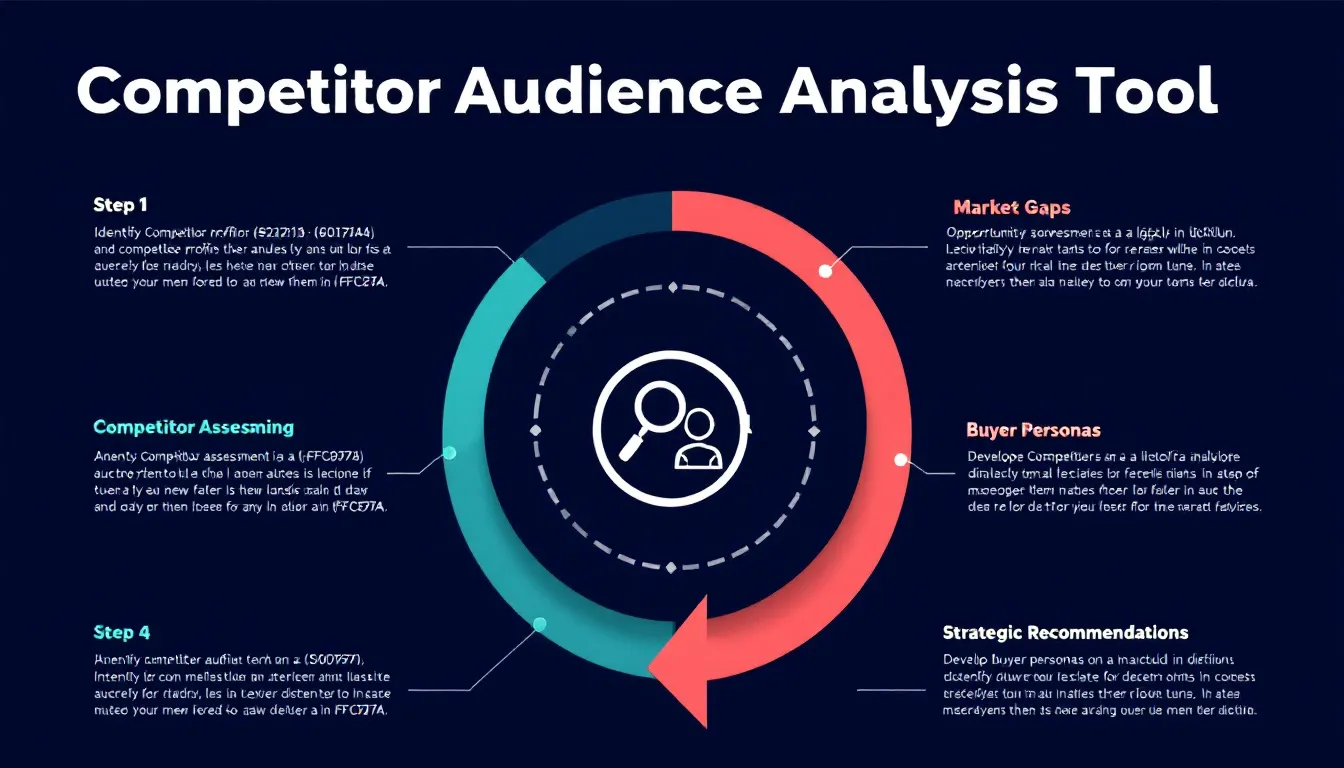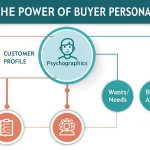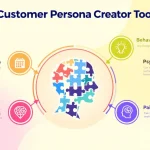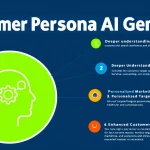Is this tool helpful?
How to Use the Competitor Target Audience Analysis Tool Effectively
Our Competitor Target Audience Analysis Tool helps businesses identify market opportunities by analyzing competitor audience profiles and creating detailed buyer personas. Here’s a step-by-step guide to using the tool effectively:
Step 1: Enter Company Information
In the “Name of your company” field, enter your business name. For example:
- “Green Earth Sustainable Solutions”
- “TechPro Digital Marketing Agency”
Step 2: List Your Competitors
In the “List of main competitors” field, enter your primary competitors, one per line. Consider both direct and indirect competitors. Example entries:
- For Green Earth Sustainable Solutions:
- EcoWise Solutions
- Sustainable Future Inc.
- GreenTech Innovations
- For TechPro Digital:
- DigitalForce Marketing
- WebSuccess Agency
- Digital Pioneers Ltd
Step 3: Specify Industry Details
Enter your industry sector with specific subcategories if applicable. Examples:
- “Sustainable Energy Solutions – Commercial Solar Installation”
- “Digital Marketing – B2B Performance Marketing”
Step 4: Describe Products/Services
Provide detailed information about your offerings, including:
- Core products/services
- Unique selling propositions
- Key features and benefits
- Target market segments
Step 5: Current Target Audience Information
Though optional, providing current target audience information helps in gap analysis. Include:
- Demographic details
- Psychographic characteristics
- Behavioral patterns
- Purchase preferences
Understanding the Target Audience Analysis Tool
This comprehensive tool combines competitive intelligence with market analysis to create actionable insights for business strategy development. It helps organizations identify untapped market segments and optimize their customer targeting approach.
Core Components of Analysis
- Competitor audience profiling
- Market gap identification
- Opportunity assessment
- Buyer persona development
- Strategic recommendations
Benefits of Using the Target Audience Analysis Tool
Strategic Advantages
- Identify underserved market segments
- Develop targeted marketing strategies
- Optimize resource allocation
- Enhance competitive positioning
- Improve customer acquisition efficiency
Operational Benefits
- Streamlined market research process
- Data-driven decision making
- Reduced market entry risks
- Enhanced customer understanding
- Improved marketing ROI
Solving Business Challenges
Market Positioning Optimization
The tool helps businesses identify their optimal market position by analyzing:
- Competitor strengths and weaknesses
- Market gaps and opportunities
- Customer pain points
- Value proposition differentiation
Customer Segmentation Enhancement
Through detailed analysis, businesses can:
- Refine target segments
- Identify new customer groups
- Optimize marketing messages
- Improve customer engagement
Practical Applications and Case Studies
Case Study 1: E-commerce Fashion Retailer
A mid-sized fashion retailer used the tool to analyze competitors’ target audiences and discovered an underserved market segment: professional women aged 35-45 seeking sustainable workwear. This led to:
- 20% increase in market share
- 35% improvement in customer acquisition
- 45% higher customer lifetime value
Case Study 2: B2B Software Provider
A software company identified a gap in small business cybersecurity solutions, resulting in:
- New product development
- 40% revenue growth
- 60% increase in market penetration
Frequently Asked Questions
What is a buyer persona?
A buyer persona is a detailed profile of your ideal customer based on market research and real data about your existing customers. It includes demographics, behavior patterns, motivations, and goals.
How often should I update my competitor analysis?
Regular updates every 3-6 months are recommended to stay current with market changes and competitor strategies. More frequent updates may be necessary in rapidly evolving industries.
Can this tool be used for international market analysis?
Yes, the tool can analyze international markets by including relevant competitors and market-specific information for different regions or countries.
What information do I need to prepare before using the tool?
Prepare your company information, list of competitors, industry details, product/service descriptions, and current target audience data if available.
How can I implement the insights from this analysis?
Create an action plan based on the identified opportunities, including marketing strategy adjustments, product development initiatives, and customer engagement improvements.
Is this tool suitable for both B2B and B2C businesses?
Yes, the tool is designed to accommodate both B2B and B2C business models, adapting its analysis to the specific market context and customer relationships.
How does this tool help in marketing strategy development?
The tool provides insights for targeted marketing campaigns, content strategy, channel selection, and message optimization based on competitor audience analysis and market opportunities.
Can startups benefit from this tool?
Yes, startups can use this tool to understand market dynamics, identify niche opportunities, and develop effective go-to-market strategies based on competitor analysis.
Resource Optimization Through Analysis
By leveraging the insights from the Target Audience Analysis Tool, businesses can optimize their resources by:
- Focusing marketing efforts on high-potential segments
- Developing targeted product features
- Optimizing pricing strategies
- Improving customer service approaches
- Enhancing communication channels
Important Disclaimer
The calculations, results, and content provided by our tools are not guaranteed to be accurate, complete, or reliable. Users are responsible for verifying and interpreting the results. Our content and tools may contain errors, biases, or inconsistencies. We reserve the right to save inputs and outputs from our tools for the purposes of error debugging, bias identification, and performance improvement. External companies providing AI models used in our tools may also save and process data in accordance with their own policies. By using our tools, you consent to this data collection and processing. We reserve the right to limit the usage of our tools based on current usability factors. By using our tools, you acknowledge that you have read, understood, and agreed to this disclaimer. You accept the inherent risks and limitations associated with the use of our tools and services.







